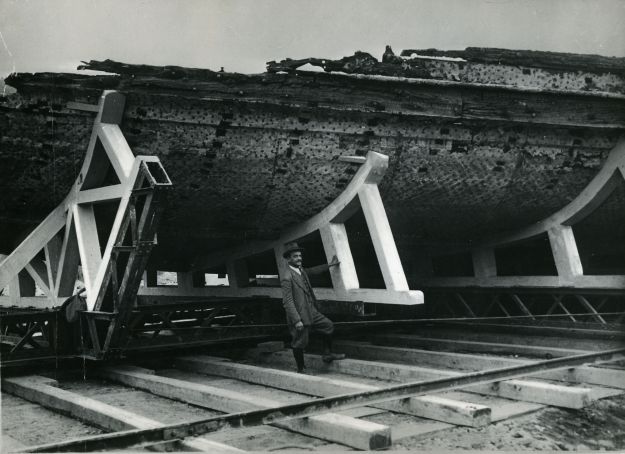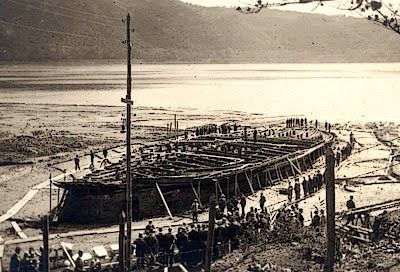Lake Nemi is a volcanic lake located in the Park of Castelli Romani, a rural pocket of the Lazio region.
Lago di Nemi in Italian, Lake Nemi is 33 metres deep and nestled among the Colli Albani, the Alban Hills. Two small towns hug the lake, Genzano and Nemi. The name “Nemi” comes from the Latin Nemus Aricinum, meaning “Grove of Ariccia,” referring to the nearby town of Ariccia.
What’s the history of Lake Nemi?
The Park of Castelli Romani lies atop a volcanic crater called the “Alban Crater.” The area is characterised by the rolling Alban Hills, with Lake Nemi and Lake Albano nestled near the west border of the park. Lake Nemi is the smaller of the two lakes, but it is widely celebrated for its historical and cultural importance.
During the reign of the Roman Empire, the area around Lake Nemi was used as a vacation destination for Roman nobility. Its hilly, rural atmosphere gives it a microclimate that offers cool, fresh air--even in summer.
Also read:
The remains of a temple to the Roman goddess Diana Nemorensis, built around 300 B.C., rest along Lake Nemi.
The proximity of the sacred temple made Lake Nemi a holy site under the Roman Empire, until the Pagan Persecution. The Romans called the lake Diana’s Mirror, Speculum Dianae, because it reflects the moon.
When the town of Nemi was a stop on the Grand Tour during the 17th and 18th centuries, this phenomenon inspired great artists such as Lord Byron, Johann Wolfgang von Goethe, and John Robert Cozens.
Today, Lake Nemi is enjoyed by Nemi and Genzano locals, as well as Roman tourists who take day trips to the area to enjoy fine wine and clean, rural air.
What is Lake Nemi known for?
In spring, wild strawberries grow in the volcanic soil around Lake Nemi. Every June, the town of Nemi hosts a celebratory wild strawberry festival, in which streets come alive with strawberry-themed decorations and street vendors sell wild strawberry preserves, pastries, teas, liquors, and more.

Genzano also hosts an annual festival, known as Infiorata. Infiorata is a Catholic celebration connected to Corpus Domini, in which artists construct massive mosaics from flowers grown in Saint Peter’s Basilica. In late June, the vibrant mosaics cover the streets of Genzano, creating spectacular temporary displays for locals and tourists to enjoy.
As for Lake Nemi itself, its ancient, pristine waters hold the eerie mystique of the sunken Nemi Ships.
What are the Nemi Ships?

In the 1st century A.D., Roman Emperor Caligula kept two large ships on Lake Nemi.
The ships, now referred to as Prima Nave and Seconda Nave (First Ship and Second Ship), or simply the “Nemi Ships,” were huge and luxurious, equipped with mosaic floors, heating systems, plumbing, onboard baths, and countless bronze and marble statues.
Historians disagree about why the Nemi Ships were built. Their size makes them impractical for such a small lake, and due to the sacred nature of Lake Nemi, traditional Roman ships were banned from sailing on it. One possibility is that the Nemi Ships were used for religious or celebratory purposes, and therefore granted exemption from the law.
Regardless of their purpose, the Nemi Ships were stationed on Lake Nemi during their use, standing as a symbol of Caligula’s wealth and power.
Also read:
The sunken Nemi Ships remained a local legend until the mid-1400s, when Cardinal Prospero Colonna and Leone Battista Alberti made the first attempt to recover them.

The Nemi Ships were located 18 metres below the surface of the lake, making them exceedingly difficult to remove. In the end, Colonna and Battista’s efforts only damaged the ships.
They remained underwater for a few hundred years, waiting for a better solution. In the meantime, it was normal for fishermen to accidentally reel in ancient Roman artifacts from the ships. In more sinister incidents, divers intentionally stole valuable goods from the ships. The Nemi Ships stayed below the surface of Lake Nemi until 1929, when engineer Guido Ucelli drained enough water from the lake to safely remove them.
Also read:
Further study of the Nemi Ships proved that many sophisticated technologies and building techniques had been utilised in ancient Rome far earlier than historians had previously thought. Additionally, prior to the discovery of the ships, historians believed Romans had not made any ships of such magnitude. The mystery of how and when the Nemi Ships sank remains to this day.
Sadly, the ships were destroyed by the German army in 1944. Many of their artifacts can be found in the Museum of Roman Ships in Nemi, and in various museums around Rome. The Museum of Roman Ships also contains full-sized reconstructions of the original Nemi Ships.
How can I get to Lake Nemi from Rome?
By Car
Lake Nemi is an hour away from Rome by car.
By Bus
While this is the easiest way to reach Lake Nemi from Rome, visitors can also travel to the area by bus. From the Rome Anagnina station, take the COTRAL bus to Piazza Frasconi in Genzano. The ride is approximately 45 minutes.
Enjoy Lake Nemi from Genzano, or take another COTRAL bus from Piazza Frasconi to Piazza Roma in Nemi, approximately 10 minutes.
Top ph: shutterstock/Heli Pekkarinen
General Info
View on Map
Lake Nemi: Pristine waters and an ancient mystery
Lake Nemi, Metropolitan City of Rome, Italy
















